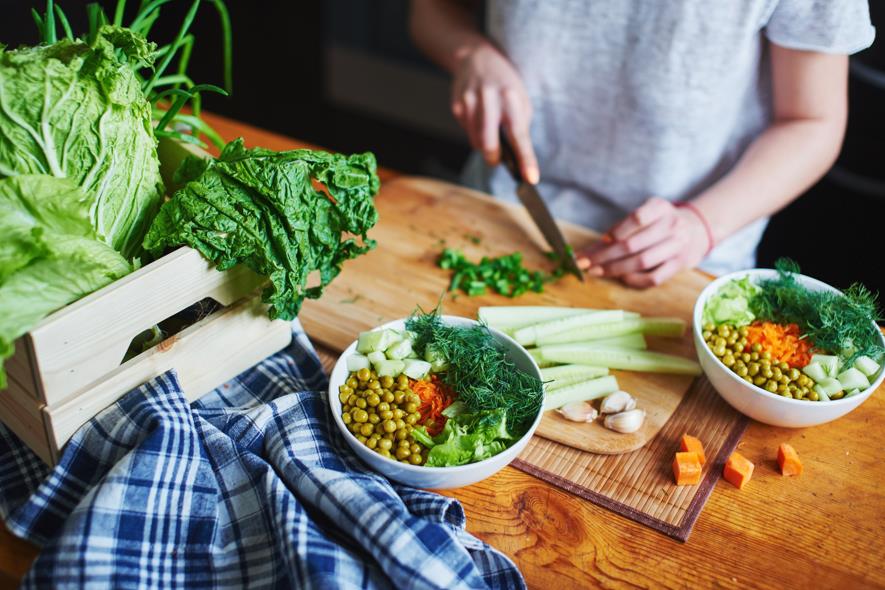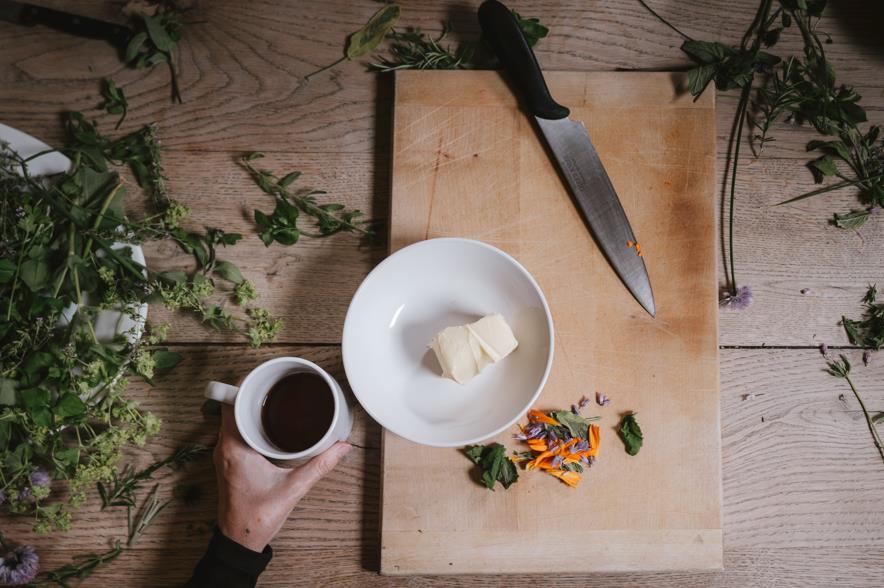The petty knife is the Japanese equivalent of a utility and paring knife. It’s a knife that functions as something between the two and a chef’s knife, offering great versatility, and is one of the most flexible knives that can handle many tasks.
The petty’s size is mainly between a chef’s knife and a paring knife. The blade design is the same as the Gyuto, one of the main Japanese chef’s knives. This trait makes the petty knife suitable for more than just peeling and slicing veggies.
A cook can get the most out of a petty knife for tasks that a paring knife would be too small, but also a chef’s knife too big at the same time. For many, it’s at the right length to handle many everyday cutting needs.
In this article, we’ll cover everything you need to know about the petty knife, compare it with similar alternatives, and things to consider when buying one.
Table of contents
Petty knife characteristics
Blade design
In many ways, the petty knife is identical to the Gyuto. It has a flat heel that curves to a pointy tip. This blade design allows it to be utilized the same way as the Gyuto but is better suited for small to medium-sized ingredients. For example, it wouldn’t be as easy to cut a large bird like turkey into individual pieces, but dicing a tomato wouldn’t be any different.
Size
The petty knife is usually not as small as the traditional paring knife but isn’t as big as a chef’s knife. It’s somewhat in the middle, with sizes ranging from 3 inches to 6 inches.
The smaller varieties of the petty knife (80-90mm) are mainly for peeling, coring, and slicing vegetables and fruits in hand. The larger ones (120-150mm) are also fine for these tasks, though they may be hard to control. Nevertheless, the large petty knives are ideal for chopping and dicing ingredients on the cutting board, much like a chef’s knife.
Edge
The petty knife can be considered an all-purpose knife with a smaller blade. For this reason, the double bevel edge is preferred over single bevel.
The petty knife’s edge isn’t as thin as some Japanese specialty knives. However, it’s much thinner than a western paring knife, making delicate cuts like slicing ingredients paper-thin easier.
Weight
The average weight for a petty knife is about 100 grams or 3.5 ounces, making it one of the most lightweight all-purpose knives you can get your hands on.
The petty knife is easier on the wrist when working for prolonged periods. This trait makes the petty knife an excellent choice for cooks with smaller hands and those that prefer light blades.
Petty knife uses

The petty knife is just as great as any other multi-purpose Japanese knife or traditional chef’s knife. It’s the perfect tool to fill the gap between your larger and smaller kitchen knives. Although you may look for a larger or smaller blade at times, the petty knife is ideal for many everyday cutting needs.
Unlike a paring knife, which doesn’t offer much use on the cutting board, the petty knife’s blade design and compact size make it a useful tool for dicing, slicing, and julienne and brunoise produce. You can also use the petty knife as a secondary blade to do detailed work like trimming fat off a meat cut.
Here are some of the best uses of the petty knife.
- Remove the skin and fat off of meat
- Slice sushi rolls
- Portioning ingredients
- Peeling vegetables and fruits
- Fabricate fish
- Segment citrus
- Deboning poultry and small cuts of meat
The petty knife offers immense adaptation for any task too big for a chef’s knife but small for a paring knife. The ability to switch to a knife that’s the right size for all the meal preparation steps helps save time and effort. Overall, you can benefit from a petty knife in pretty much all aspects of cooking.
Handpicked for you
True cutting power in the palm of your hand
Petty knife vs. paring knife
When comparing the paring knife with the Japanese petty knife, we need to look at the smaller varieties of the petty. As mentioned above, the smaller petty knife has a blade ranging from 80 to 90mm. The medium-sized petty is more comparable with the utility knife than the paring knife.
Both the western paring knife and the petty are similar in size and weight. The key difference between the two is the blade design and use.
The paring knife has a relatively flat blade with a pointy end. This makes the paring knife ideal for peeling, coring, and portioning small vegetables and fruits. It’s also easy to work with a paring knife on other precision tasks like deveining prawns and carving small poultry.
The petty knife is similar to the paring knife, but the wider blade at the heel opens up a lot of other uses. This triangular shape may not be as apparent in the smaller petty knives, but it’s enough to help you quickly chop ingredients on the cutting board. Because of this difference, the paring knife is somewhat better for working with ingredients in hand.
The petty knife is more suitable for cutting and slicing on the cutting board. However, this isn’t to say that a petty knife isn’t adequate for in-hand use. Peeling or segmenting citrus is just as easy with the petty knife.
Petty knife vs. utility knife

The use of the petty knife is a lot similar to the traditional utility knife. After all, these knives are considered the Japanese version of utility knives. However, as with many other Japanese kitchen knives, they feature a rather different design. The triangular blade is different from the western utility knives, which have long, narrow blades.
Both the petty and utility knives are similar in size, but some utility knives can have a blade size as big as 9 inches. The utility knife’s narrow blade makes slicing cheese, citrus, sandwiches, and peeling vegetables and fruits easy.
These can be done with a petty knife, but the broader blade at the heel makes the petty a better option for cutting on the board. You can rock the blade over the ingredients as you would with a chef’s knife when using the petty, but this won’t be as functional with a utility knife.
The utility knife is better suited for cuts that don’t repeat as much, like slicing a few pieces of cheese or a sandwich in half. Additionally, you can use the utility knife in a similar way to the boning knife.
The utility knife is mainly for things you wouldn’t need your primary blade. The same also applies to the petty knife, but it’s somewhat more versatile than the traditional utility knife as it has the characteristics of a chef’s knife in a smaller blade. Moreover, you can consider a petty knife between 5 and 6 inches as a more petite chef’s knife, hence the name.
Should I buy a petty knife?
Many home cooks can go about their day with just a chef’s knife and a petty knife. A petty knife is also a viable option for those looking to get an all-purpose knife between their large and small blades. The 5 to 6-inch versions make great secondary knives alongside a primary chef’s knife or even a primary.
At times, you might find yourself wanting more from your utility or paring knife. In these cases, the petty knife will be the right alternative. The ability to do precision work and chopping and dicing ingredients on the cutting board make the petty knife a versatile instrument. If these sound beneficial, here are a few tips on choosing the right petty knife for your kitchen knives supply.
How to choose a petty knife?

No matter the type of knife you’re planning to buy, shop with the functionality in mind rather than the appearance or name. As with any other knife, there are key points to consider before making your purchase. Consider the following when buying a petty knife.
Size
When buying a petty knife, you’ll often have two size options: one with a blade length between 80 and 90mm and the other from 4.5 to 6 inches. The smaller varieties are a lot like paring knives, and the longer petty knives resemble utility knives.
If you’re looking for a knife to peel, core, and do other precision work, the smaller petty will fit right in. On the other hand, if a knife to handle every other task in addition to these is what you need, a 5-inch petty knife will suit you better.
Steel
Other than the blade’s size, consider the type of steel as it will affect how you store and keep up with your knives. Most petty knives have a double bevel edge with stainless steel and carbon steel options. If you plan on using the petty knife as a secondary paired with a chef’s knife to do precision work, the anti-corrosive attributes of the stainless steel can be beneficial.
If rinsing the blade and drying it in between tasks doesn’t pose a challenge, the edge-retention of carbon steel would be highly beneficial.
Handle
You can get petty knives with the traditional Japanese handle, the wa-handle, or equipped with a western style. The critical difference in all knives, not just the petty, is that the western handle will have a balance towards the handle. This is more prominent in knives with a full tang. The kitchen knives with the wa-handle are usually balanced forward to the blade.
It can take some time to get used to either one if you’re not familiar with both. The petty with the type of handle you’re familiar with will be the better choice.
Ending
Despite its name, petty offers too much in a small blade. It’s one of the best picks out there for any cook to have an alternative to their bigger and smaller knives. With a great selection of sizes ranging from three to six inches, you can find the one for your needs. Read more on the HDMD Knives Blog to learn about different types of kitchen knives.












